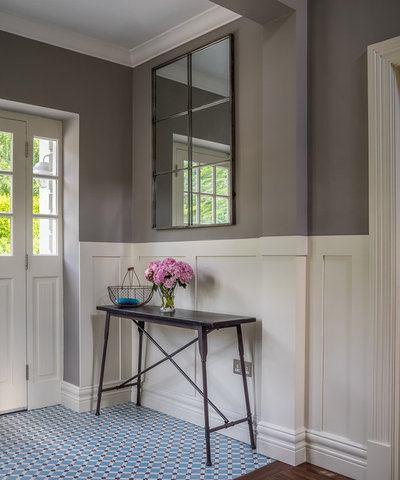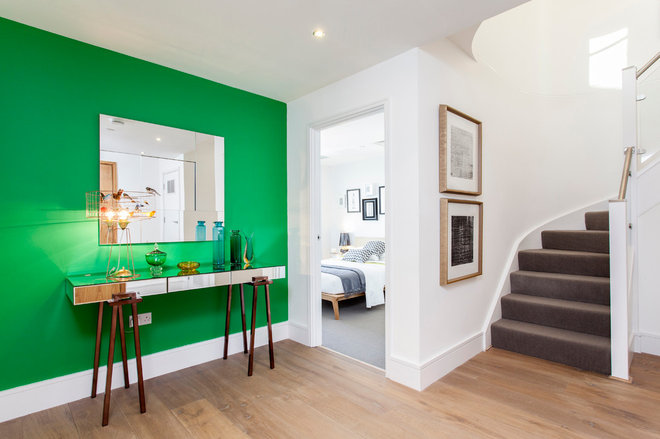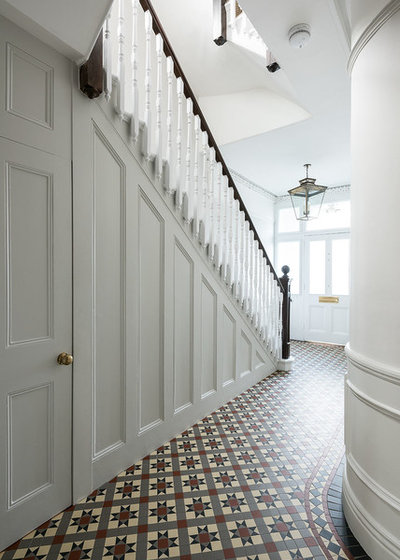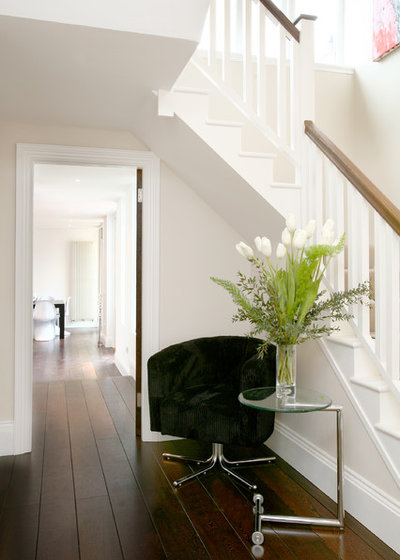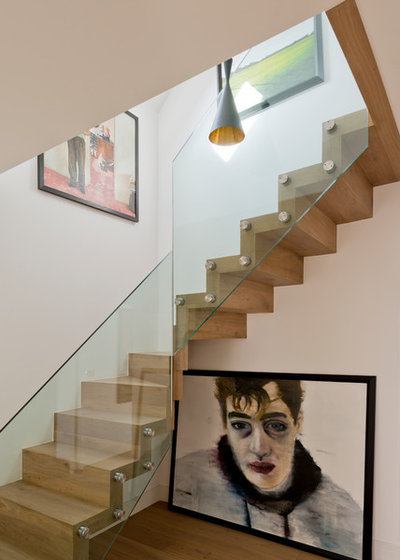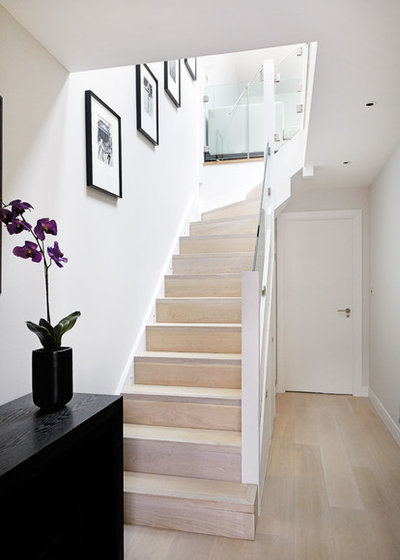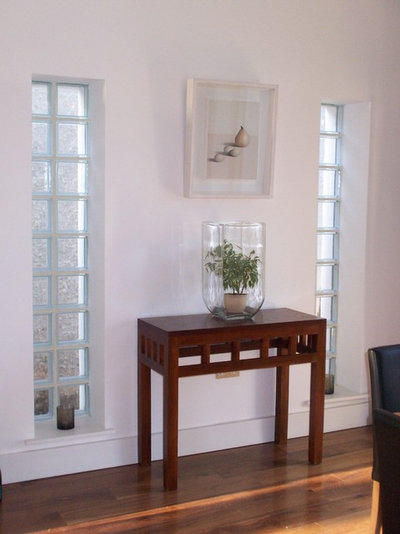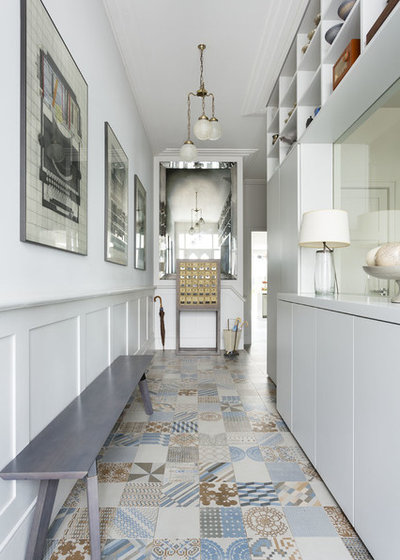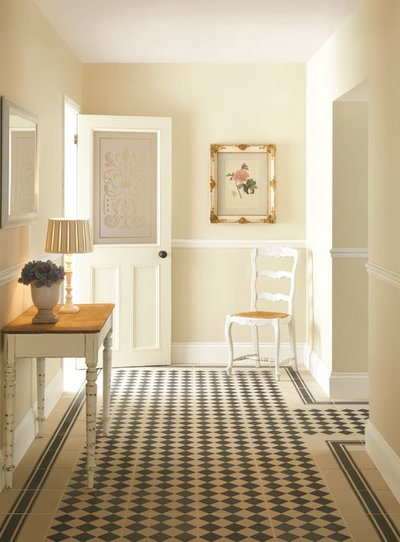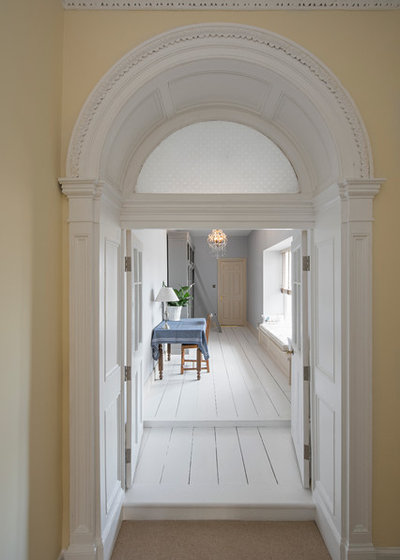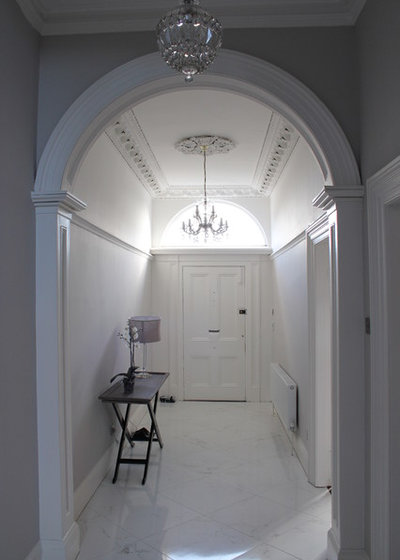Do you come home to a gloomy welcome when you open your front door? These solutions can lighten things up
By Eva Byrne - Houzz Ireland Contributor
The hall, the first space to greet us each time we return home,
should ideally be a light-filled, welcoming room with conveniently
located storage cleverly concealed from view. Sadly, however, our
entrances are often narrow passages with little light and inadequate
closet space.
There is hope, however. Check out these 10 ways, from structural alterations to decorative touches, to improve how you can both capture and reflect light in a hall of any size.
There is hope, however. Check out these 10 ways, from structural alterations to decorative touches, to improve how you can both capture and reflect light in a hall of any size.
1. Try a mirror. The
simplest of solutions — a strategically placed mirror — will amplify
your space and bounce around whatever light is available to best effect.
Position the mirror to reflect both natural light and, if possible,
another key feature in the space, perhaps a piece of art.
This is a super-versatile idea that would work in period and contemporary properties alike.
2. Add glass upfront. The
best way to deal with issues of darkness is to introduce more natural
light. Even the smallest panes in the front door or side panels will
help here. Use opal or frosted glass where there are privacy or security
issues.
3. Brighten the balustrade. A
natural wood balustrade can appear to eat precious light. Painting the
balusters white will both soften the overall effect of the stairs in the
hall and enhance light reflection.
For those reluctant to paint wood features, bear in mind that painted wood is still wood, with its own aesthetic.
For those reluctant to paint wood features, bear in mind that painted wood is still wood, with its own aesthetic.
4. Or go transparent. If
you’re planning major work, replacing the traditional balustrade with
one made of clear glass will offer an even greater flow of natural
light.
5. Look up. Light from above is powerful and transforming. In fact, skylights, or roof lights, can be three times more effective at bringing in light than regular windows, according to the United Kingdom’s National Association of Rooflight Manufacturers.
Investigate whether your roof profile allows the fitting of a skylight
over your first floor landing. Combined with light-reflecting decor,
this could allow your hall at ground level to be constantly flooded with
natural light.
6. Steal light from the side. If your home is detached, it may be possible to steal some light from the side.
Here, glass blocks positioned in slim, vertical columns on either side of a console table — flanking a statement mirror would work just as well — strike a contemporary note and overcome any privacy issues. Opal glass would achieve the same result.
Here, glass blocks positioned in slim, vertical columns on either side of a console table — flanking a statement mirror would work just as well — strike a contemporary note and overcome any privacy issues. Opal glass would achieve the same result.
Where that isn’t possible,
consider this option: The owners of this house have fitted an internal
window looking into the living room and stealing light from the window
in there.
7. Borrow light from an adjacent room. I’ve
already touched on this with the idea of an internal window, but for
something less structural, use doors with clear or translucent glass
between the hall and any adjacent rooms. This will allow natural light
to flow through the entire ground floor.
Single-panel glass doors work well in both period and contemporary homes. Again, opal or frosted glass will allow for privacy where appropriate.
Single-panel glass doors work well in both period and contemporary homes. Again, opal or frosted glass will allow for privacy where appropriate.
8. Go Nordic. The
Scandinavians are surely masters at maximizing light. They show us how
the simple act of painting wood floors can bring airiness to any space.
Choose from a range of specialist floor paints available to achieve a
quality finish that will improve with age.
9. Step lightly. It’s
essential to adopt a light palette when choosing colors and finishes for
your dark hall. White floor tiles can work wonders here. In particular,
tiles with a low sheen will reflect light beautifully.
A recessed mat well at the front door is vital for dirt management, and you could also add carefully selected runners to provide additional dirt management, color and texture as needed.
A recessed mat well at the front door is vital for dirt management, and you could also add carefully selected runners to provide additional dirt management, color and texture as needed.
10. Paint it white. A
hardwood door will absorb light and add to the general sense of gloom.
Paint the internal face of the door white to reflect light and transform
the ambience of any hall. This works well even where the door has no
glass.
Choose a color you cherish for the outside of the door to add to that important sense of welcome.
Choose a color you cherish for the outside of the door to add to that important sense of welcome.
